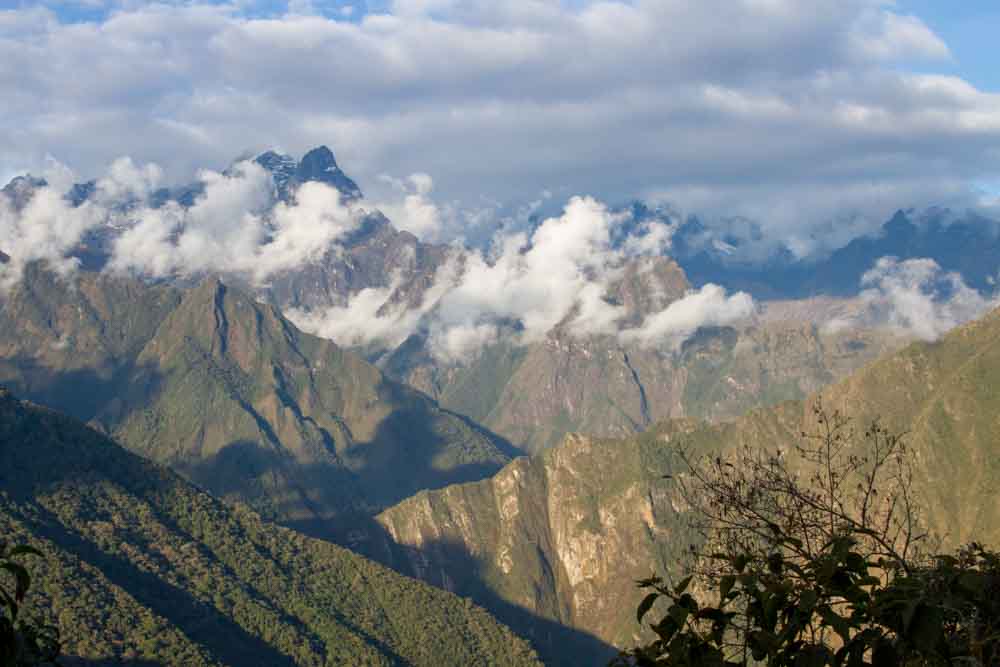
The trek on the classic Inca trail, which is considered to be of intermediate difficulty overall, with some more challenging sections. The hike is a one-way trip that requires four days and three nights to complete. It’s slightly over 26 miles or 42 km in length, which is coincidentally close to the length of a modern marathon. You will cross over the “Dead Woman’s Pass”, which is the highest point on the trek at just under 14,000 feet above sea level. Dead Woman’s Pass got its name from the profile of the mountains, not because of an unfortunate event of the past.
While there are a few different starting points, our trek began just outside of the village of Ollantaytambo, This village was the home of the Incan emperor Pachacuit, who ruled the region for many years. The town was also the ceremonial headquarters for the Incan civilization and you can still see the ruins of the ceremonial grounds.
Much of the original Incan construction of the trail remains intact today, just as it was built. The Peruvian government goes to great lengths to preserve the integrity and natural beauty of the trails for all to enjoy. We thoroughly enjoyed exploring these ancient ruins and feeling the history that they represent.
The number of people allowed on the trail is tightly controlled to be sure that it is not overrun and damaged. At the time that we visited only 500 hikers and their porters and tour guides were allowed on the trail during any given day. While we certainly crossed paths with some other hikers, there was not a lot of traffic, which allowed us to take our time, explore the sights, and enjoy the experience.
About the Hike
Day 1 – The first day of our hike was generally the easiest and was a good way to ease into the adventure. About 12 miles in length with a moderate climb to 9,843 feet above sea level, this portion of the hike was enjoyable, filled with sights to see and not too physically difficult.
Day 2 – Without question, Day 2, which is considered to be very difficult, was the most challenging. While the distance covered was about the same as Day 1, this portion of the hike included climbs over the two highest points on the trail and a steep descent between them. During our ascent to Dead Woman’s Pass, which is the highest point on the trail at 13,779 feet above sea level, we countered wildlife and vegetation that we have never seen. We passed through a “cloud forest”, which is a unique climate that cannot be found anywhere else. A 4,000-foot climb to Dead Woman’s Pass over a distance of about 8 km really challenged our legs and endurance, especially at altitude.
Day 3 – Day 3 is considered by many to be the highlight of the trail. Starting with a modest climb, we spent the vast majority of Day 3 on the descent. You will visit many archaeological ruins in places like Runkuracay, Sayaqmarca, and Conchamarca. The mountain views were utterly spectacular and you will again pass through the cloud forest as you descend toward Machu Picchu. We definitely found that descending on the trails challenged new muscles in tired legs, but it was easy to forget about that when the views were simply stunning.
Day 4 – The shortest of the hiking days, we rose early, well before dawn so that we could hike the 4 or 5 km to the Sun Gate and watch the sunrise over Machu Picchu. This was perhaps one of the most awesome, spiritually inspiring travel experiences we’ve ever had. After watching the sunrise we proceeded the remainder of the 6 km down to the ruins in Machu Picchu and spent several hours touring and experiencing this sacred Incan site.
The Best Time to Go
Generally speaking, the best time to hike the Inca trail is during the dry season also known as the winter south of the equator, which is June through August. We visited during the second week of September and had really good weather as well. During this season the days are generally warm, except at altitude and the nights can be cool to cold.
One drawback of going during the dry season is that it’s much more difficult to get a permit. This is the most popular time to go and the demand for permits is high so you will need to book your trip far in advance of your travel dates. That said, the limits on the number of hikers allowed on the trail help to reduce congestion on the route. You may find that the Machu Picchu site is more crowded during this popular season. We hiked the trail in September and the crowds were reduced, however, the night temperatures were colder. You will need to be prepared should you choose to go a bit later in the season.
You may be able to find good deals on tours during the off-season, including during the spring, which is September through November. Crowds are generally smaller and the weather can also be reasonably good for the trail hike.
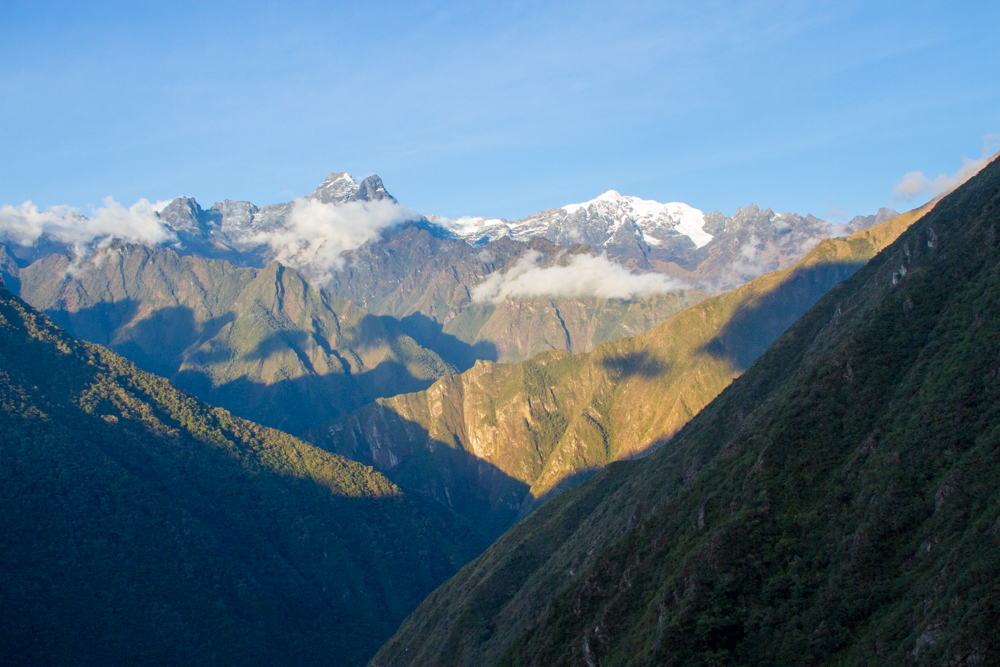
How to Get a Permit
In order to control crowds and to protect the sanctity of the trail, the Peruvian government requires that all visitors have a permit to hike the Inca Trail. The permitting scheme only allows for 500 visitors to be on the trail during any given day, so the demand often far exceeds the available capacity.
It’s for this reason and the fact that the permits are sold on a first-come, first-serve basis, that you need to plan well in advance to secure your permit – often a year in advance. Permits go on sale in January each year and often sell out the popular times in as little as a few days.
Additionally, the government requires that every hiker on the trail be accompanied by a registered tour guide. It is for this reason that you must obtain your permit through one of the registered guide companies. We used Evolution Treks Peru <link> and were extremely happy with the service that they provided and how they provided it. More on that later!
Permits are issued to an individual and linked directly to their passport number. We had to present our passports along with proof of our permit purchase before we were allowed on the trail. A reputable tour company will ensure that these details are taken care of before you arrive, so be sure to do your research.
Permit availability can be checked on the Peruvian Ministry of Culture website, which is updated in mid-January each year when permits go on sale.
“Twenty years from now you will be more disappointed by the things that ou didn’t do than by the ones that you did. So throw off the bowlines. Sail away from the safe harbor. Catch the trade winds in your sails. Explore. Dream. Discover.”
~ Mark Twain
Choosing a Tour Company
This is, without question, one of the most important decisions that you will make as you are planning your Inca Trail hike. The tour company not only helps you safely navigate the trail but also provided the necessities during your trip. These include tents, sleeping bags, pillows, all of your food and water, including meal preparations, hiking poles, etc. The tour company will also be your permit provider.
Be sure to do your research and pay attention to review comments. Like any other industry, there is a wide variety of tour providers, some better than others. We chose to work with Evolution Treks Peru after fairly extensive research. Here are a number of aspects to consider as you evaluate the various tour companies:
Type of Tour – Many of the tour companies offer a variety of types of tours. These include group tours, private tours, a variety of distances, and various degrees of tolerance for slower-paced individuals. You also will want to ensure that your guide speaks a language that you can work with.
Cost – The per-person cost of a tour can vary a lot. Anywhere from about $500 USD to as much as $1,900. Unless you’re looking for an ultra-luxurious experience, which in our view is not the point of the trip, you should expect to pay somewhere between $700 and $900 per person. Be wary of the low-cost providers. We got the opportunity to observe some of the lower-cost outfits in action and were glad that we didn’t try to save a few bucks!
Equipment – The tour operators should provide you will all of the necessary camping equipment, including tents, sleeping bags, sleep mats, walking sticks, meal prep equipment, etc. Be sure to inquire about the age and condition of the equipment before booking your trip.
Meals & Food – It’s a really good idea to check to be sure you understand what you can expect for food along your trip. You should expect three meals a day, with the evening dinner being the largest of the three. Our tour group provided us with authentic Incan cuisine that was absolutely delicious, which really enhanced the experience. You’ll also want to be sure that the guides will provide plenty of filtered water for your group and to communicate with them in advance to be sure that they can accommodate any special dietary needs that you may have.
Transportation – Many tour companies will provide transportation from your hotel to the starting point on the trail. Be sure to check to ensure that you have arrangements to get to the start. It’s also important to remember that the hike on the trail is a one-way adventure. Hiking back is not permitted. Your tour company should provide you with transportation back to the starting point or, better yet, directly back to your accommodations.
First Aid & Communications – A reputable tour operator will have first aid available during the trip and will bring a method to communicate to emergency services along the route. You may want to inquire about the availability of oxygen in case someone unexpectedly struggles with altitude sickness. It’s also good to bring along a small personal first aid kit, just to be sure that you’re covered for the inevitable small things that will occur.
Ethical Porter Treatment – This was a biggie for us! There are many stories, and some we personally observed on the trail, of tour companies that mistreat their porters, overload them with packs above the 20 kg limit, feed them poorly, and just simply show a disregard for their well-being. In fact, during our hike, we encountered an older porter who was clearly very ill and had been abandoned by his group and told to catch up. Our guide helped him get to a checkpoint and called for assistance. During our trip we ate with our porters, they ate what we ate, we socialized with them and got to know them. We always want to travel ethically and ensure that we are contributing to social advancement wherever we can. Evolution Treks Peru is a leader in this area, and was, in fact, the first company to employ female porters and now offer an all-female trek.
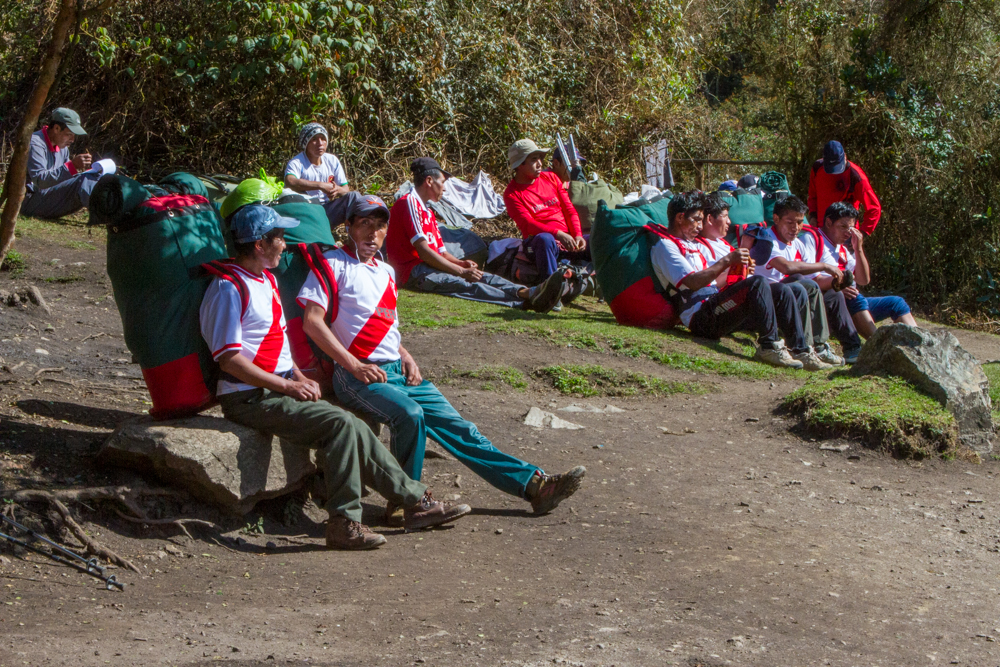
How to Prepare
Physical Fitness
Everyone starts from their own particular fitness base. It’s impossible to describe just how fit you need to be to hike the Inca Trail. It’s not one size fits all. You will need to hike distances of up to 16 kms and climb steep inclines carrying a small personal pack. It’s also notable that the descent is often as difficult as the climb as it stresses different muscles.
Everyone starts from their own particular fitness base. It’s impossible to describe just how fit you need to be to hike the Inca Trail. It’s not one size fits all. You will need to hike distances of up to 16 kms and climb steep inclines carrying a small personal pack. It’s also notable that the descent is often as difficult as the climb as it stresses different muscles.
We did our hike in September and began our preparations in the April/May timeframe. While it may not be your choice but we walked extensively multiple times a week. We live in a relatively flat area so we sought out opportunities to hike up and down ski hills in the area and to use stairs whenever possible. My husband rides a spin bike regularly, which helped him prepare as well.
Altitude Awareness
Acclimate before you hike! We live in an area that is about 500 feet above sea level, so the travel to Peru was a big adjustment for us. We spent 5 days in the Sacred Valley area to help us acclimate to the altitude before starting the strenuous portion of our trip. During this time my husband had low-grade altitude sickness that he described as a “small hangover” for a few days. It’s very important to have time to allow your system to adjust before tackling the mountains.
Get Your Head in the Game
You will need your endurance and stamina to complete the hike. This is true mentally as well as physically. There could be points on the trail where you need to push yourself to get through it. It’s important to stay focused on where you are, the scenery, and the significance of the trail, which is more than likely what brought you there in the first place. Some parts of the trail are easy and relaxing whereas others are more rigorous and will tax you both mentally and physically. Also, be prepared to give yourself the time you need to rest and recover along the trail. Don’t feel pressured to keep up or to set a certain time. Your porters and guide will understand and are there to help you succeed.
Clothing and Gear
Get good footwear. This is simply not optional. The unevenness of the trail, the often damp or misty conditions, and simply the distance all cry for investing in a great pair of hiking boots. We did and didn’t regret it for even one minute. In fact, I donated my boots at the end of the hike to one of the women porters to pay it forward. Having good footing and dry feet are simply essential. And break in your footwear before arriving. Ideally, get your hiking boots and train in them for the months that you spend preparing. It’s a total rookie mistake to show up with brand new boots – you would regret it.
Here is a quick list of what was in our gear bag for our hike on the trail…
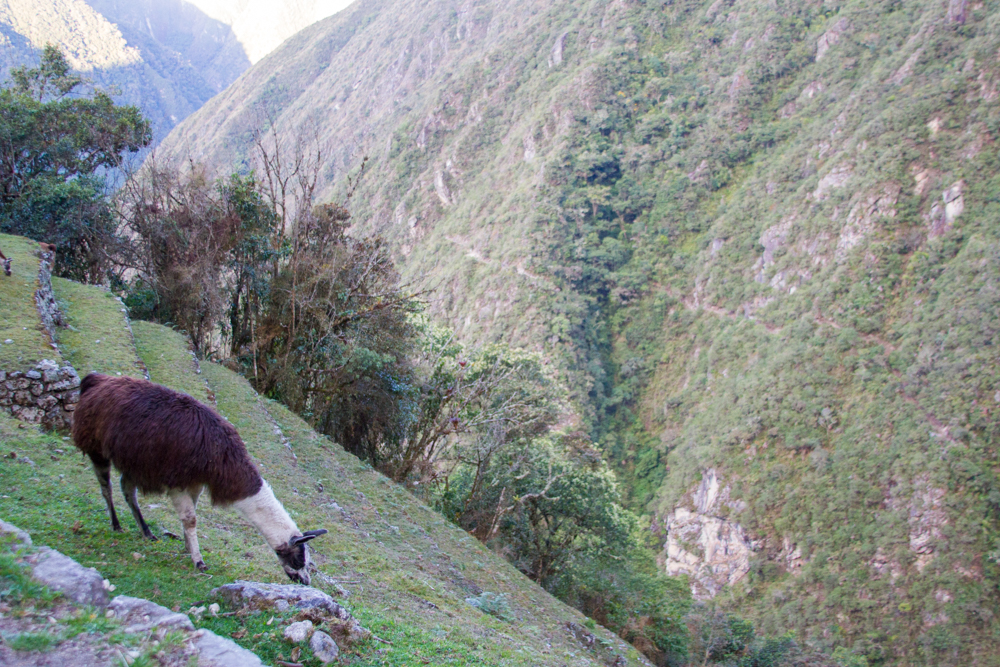
Camera Gear
The sights that you will see during your hike will be awe-inspiring and unforgettable. That said, if you’re into travel photography, the Inca Trail will present opportunities to get those epic pics like no other. My husband carried his full-sized DSLR on the trip and got some great images. If you’re not inclined to lug the “big camera” with you the entire trip you may consider one of the newer compact mirrorless cameras – which are might lighter and take great images. Don’t’ forget to bring plenty of memory card capacity and a way to charge your camera via a battery bank or the like.
Take plenty of pictures and you will capture some of the most amazing travel memories that most of us will ever experience.
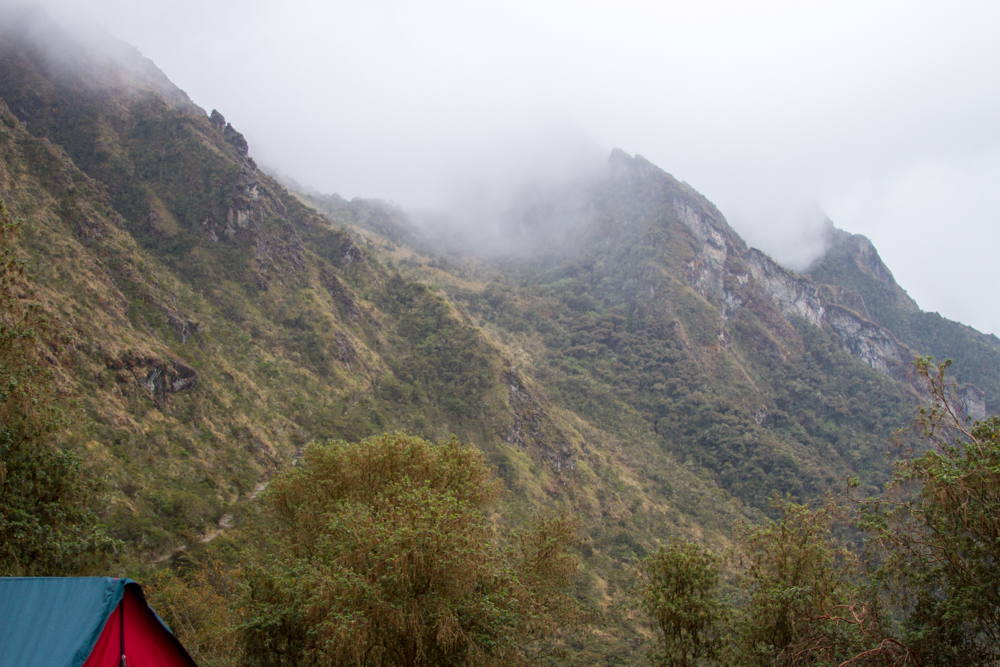
Other Tips, Tricks & Fun Facts
Other Ways to Machu Picchu – There are many other ways to reach Machu Picchu other than hiking the Inca Trails. There are other hiking routes such as the Salcantay and Lares trails, and a bus that will take you from Aguas Caliente. The hike is an awesome experience, but might not be everyone’s cup of tea.
Original Construction – Much of the trail is still the original Incan construction. The construction of such a trail through rigorous terrain is an engineering feat to be marveled at as you walk the trail. The Peruvian government has gone to great lengths to preserve the construction of the trail and ruins along the way. This is what makes the Inca Trail hike one of the most interesting in the world!
Raiders of the Lost Ark – It’s believed that the Indian Jones character in the Raiders of the Lost Ark series was based loosely on Hiram Bingham, the Englishman that discovered Machu Picchu in modern times.
Stamp Your Passport – You can collect four very cool stamps in your passport along the route. And it’s needed to get on the trail. Be sure to bring it!
Stow Your Heavy Luggage – Most of your luggage will need to be secured at your hotel location, which is common practice and safety. You need only bring what you plan to carry in your day pack, which would include clothing and accessories. Nonetheless, don’t leave valuables in your checked luggage. It’s just common sense.
Hand Wash Only – Don’t expect to take a shower – or even use a typical toilet. There are no shower facilities so use your baby wipes to clean yourself up and maybe lower your standards for a few days. Restroom facilities are scarce and are pretty much the proverbial “hole in the ground”. Be prepared to pay a modest fee for using them as well.
Tip Your Guide & Porters – Remember to bring enough Peruvian cash to tip your porters, guide, and chef. The customary tipping rate is 65 to 80 Soles for each porter, per person in your group, assuming satisfactory service. This translates to roughly $25 to $30 USD. These are typically contributed to a pool and split amongst the porter team. Tip rates for the guide, chef, and assistance chef are typically slightly higher. These are just suggested guidelines and you can tip more if you’re very satisfied with the service you receive. It’s important to remember how your porters set up and take down camp, carry all of your camping gear, prepare your meals before you arrive at a checkpoint, and generally ensure that you have everything that you need to make the trek possible.
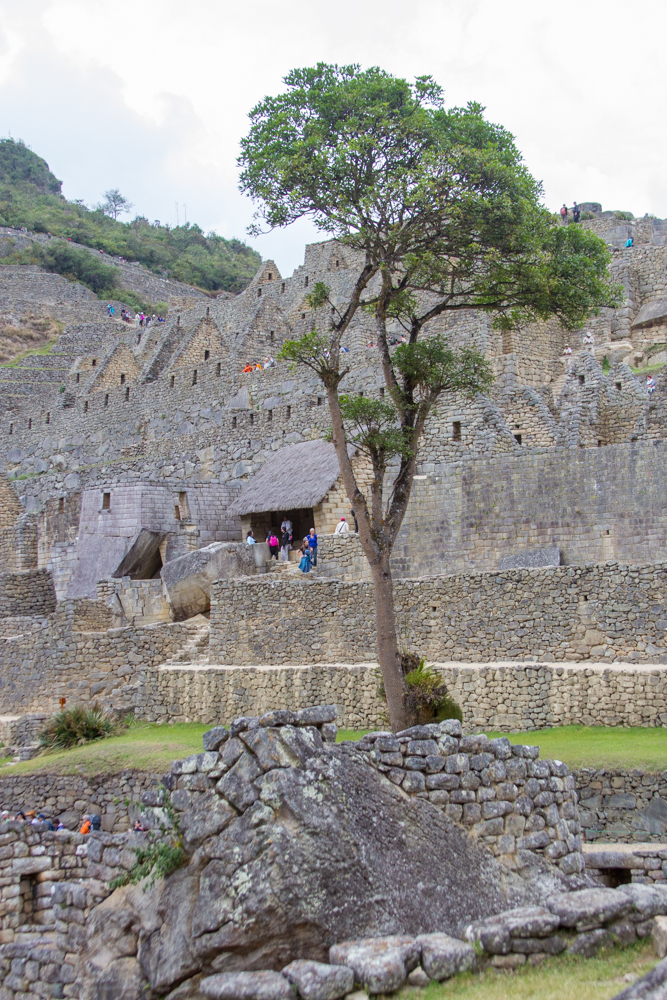
The Lone Tree at the Center of the Machu Picchu Courtyard
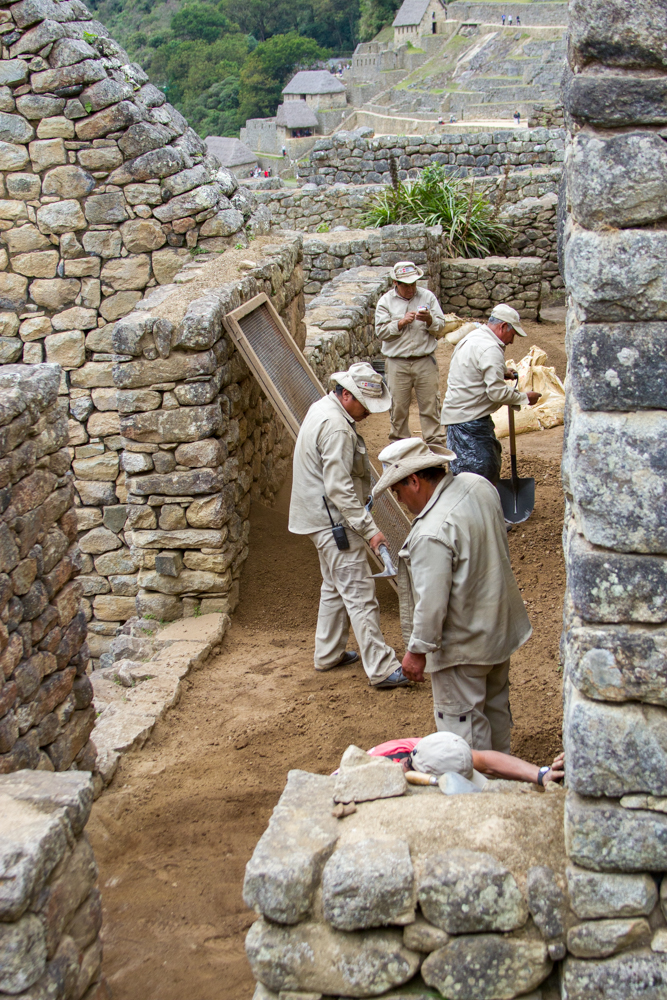
Meticulous Maintenance Crews
Hiking the Inca Trail was one of our most unforgettable journeys that left a lasting impression on both of us. One that we will never forget. Careful planning and preparations are necessary to ensure that you have a successful trip, but the reward is well worth the effort! If you’re looking for an adventure that will both inspire you and physically challenge you, we highly recommend the four-day Inca trail journey.

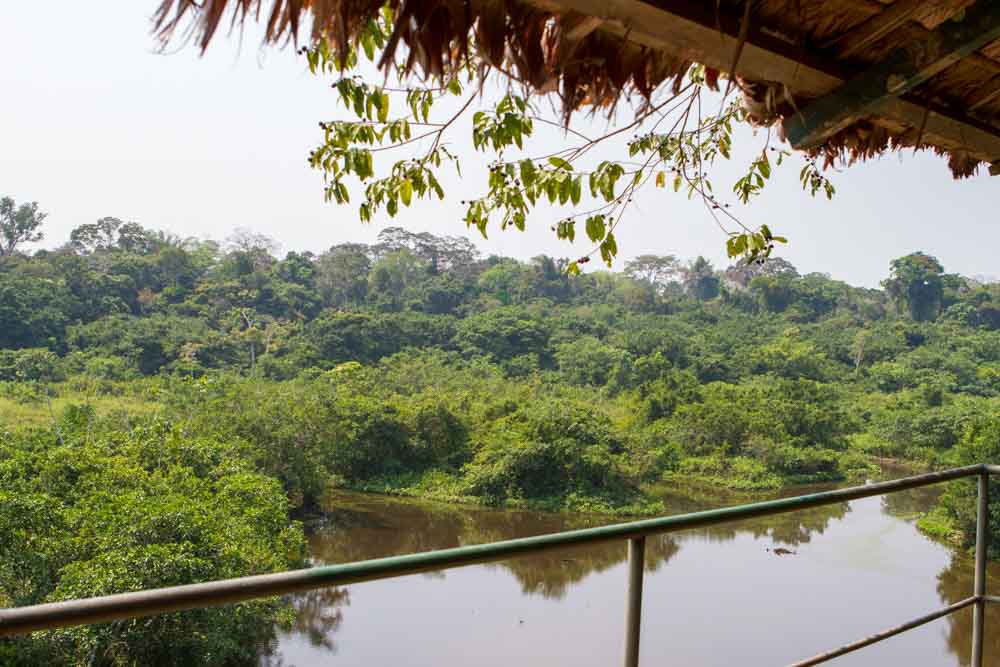
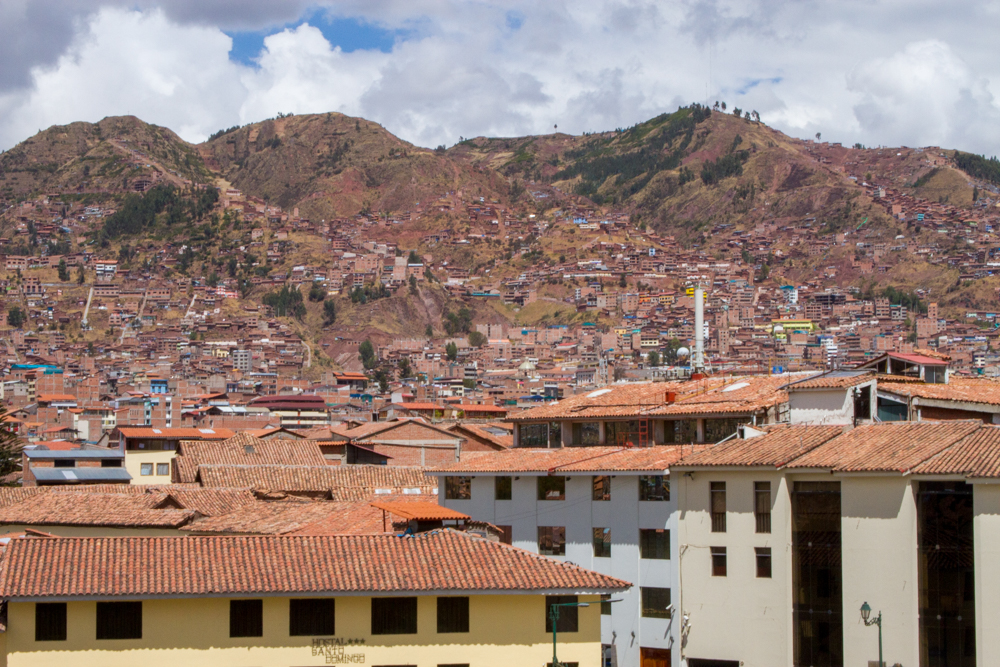
Pingback: Ancient City of Cusco – Wandering Waze